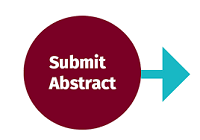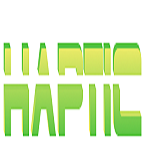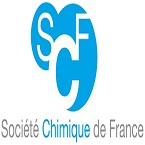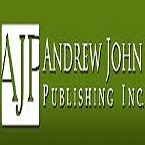Renowned Speakers

Aaron Damien Barzey
ADB Medical UK

Tayssir Hamieh
Maastricht University Netherlands

Zhihong Xu
South College USA

Roger W Jelliffe
University of Southern California USA

Marta Truffi
University of Milano Italy

Massoud Toussi
IMS Health, France France

Satyanarayana Somavarapu
UCL School of Pharmacy UK

Omathanu Perumal
Tranzderm Solutions USA
Recommended Global Chemistry Webinars & Conferences
Europe & UK
Asia Pacific & Middle East
Chromatography 2022
About Conference
Chromatography 2022 welcomes professional chemists, researchers, professors, scientific communities, delegates, students, business professionals and executives from all over the world to attend the ‘12th International Conference and Exhibition on Chromatography and Analytical Techniques’ during October 10-11, 2022 at Valencia, Spain which includes prompt keynote presentations, Oral talks, Poster presentations and Exhibitions with the theme “Contemporary Advancements and Innovations in Chromatography and Analytical Techniques”.
Chromatography 2022 conference could be a global platform for sharing and exploring new areas of research and development and to assess rising technologies in the field of chromatography. In Chromatography 2022, there will be many seminars, workshops and technical sessions take place in this conference series which will catch the attention of the professionals to attend the conference and it would enormously enrich our knowledge in understanding the current requirements of the global pharmaceutical industry. The expert will get an excellent opportunity to give many presentations and lectures on different topics.
Chromatography 2022 is a global annual event to discuss and learn about different types of chromatography and separation techniques in chemistry, Hyphenated Separation Techniques, Novel separation techniques, Recent advances in chromatography, High Performance Liquid Chromatography, Spectroscopy, Paper Chromatography, Thin-Layer chromatography, Gel chromatography, Affinity chromatography, Ion-exchange chromatography, Various applications of chromatography and research related to these fields.
In the light of this theme, the conference series aims to provide a forum for international researchers from various areas of analytical research, separation sciences, method development and validation by providing a platform for critical analysis of new data, and to share latest cutting-edge research findings and results about all aspects of separation techniques and chromatography.
Target Audience:
- Analytical experts in chromatography
- Research Heads from Research Centers
- Analytical experts in Pharmaceutical and Life science
- Directors of analytical chemistry department in various Universities and institutions
- Industrial expertise working with various novel solid and liquid columns
- Marketing teams of Industries with novel products to show case at the conference
- Directors and Professors from Universities and Institutions
- Post-doctoral and PhD students working on analytical method development
- Theoretical scientists working on deriving analytical hypotheses
- Relevant Graduate and Post graduate students
Conference series LLC Organizes 1000+ Conferences every year across USA, Europe & Asia with support from 1000 more scientific societies and Publishes 700+ Open access Journals which contains over 30000 eminent personalities, reputed scientists as editorial board members make Conference series LLC the perfect platform for global networking as it brings together renowned speakers and scientists across the globe to a most exciting and memorable scientific event filled with much enlightening interactive sessions, world class exhibitions and poster presentation.
Sessions and Tracks
Track 1: Adsorption Chromatography
Adsorption chromatography is definitely one of the earliest types of analytical method of separation technology. Adsorption means a physical connection between the compound and the particles of stationary phase. It utilizes a mobile liquid or gaseous phase that is adsorbed onto the top most layer of an immobilized solid phase. Column chromatography has been employed to separate vitamins, steroids, hormones, and alkaloids and to determine the amounts of these substances in samples of body fluids .The different separation techniques involved are column chromatography, thin layer chromatography and liquid chromatography.
Track 2: Partition Chromatography
Partition chromatography is method of separation in which the components present in the mixture get distributed more likely into two liquid phases because of differences in partition coefficients. In Partition chromatography, the molecules are separated in between two phases i.e. both stationary phase and mobile phase are in same phase. So molecules get dispersed into either phase preferentially. The partition chromatography is the basic principle involved in many separation techniques like high performance liquid chromatography and gas chromatography. Partition chromatography is basically understood as a method of separation of solutes utilizing the partition of the solutes between two liquid phases. Paper chromatography and High performance TLC also works on the principle of the same.
Track 3: Ion Exchange Chromatography
Ion exchange chromatography (IEX) separates molecules present in the mixture based on differences in their net surface charge. Ion exchange chromatography playing an important role in the separation and purification of biomolecules. Today, IEX is one of the most frequently used separation techniques for purification of amino acids, proteins, peptides, and nucleic acids. Ion Exchange Chromatography depends up on charge-charge interactions between the proteins in the sample and the charges immobilized on the resin of choice. Loading samples in buffers of low ionic strength makes ion exchange chromatography an excellent purification step after hydrophobic interaction chromatography.
Track 4: Molecular Exclusion Chromatography
Molecular exclusion chromatography also called or named as Size exclusion chromatography (SEC) separates molecules depending on their molecular size by filtration through a gel. The gel consists of spherical beads containing pores of a particular size distribution. Separation techniques occurs when molecules present in the mixture, of different sizes are included or removed from the pores within the matrix. Small molecules and large molecules are separated based on entering in to the pores. Consequently, molecules separate based on their size as they pass through the column and are eluted in order of decreasing molecular weight (MW).
Track 5: Separation Techniques in Chemistry
Special techniques in analytical chemistry also play an important role in the analysis of many chemical compounds. Physical separation techniques are the most common, least expensive and safest. Component separation is also relatively easy but tends to be more expensive. The specialty chemical and pharmaceutical industries are the primary users of component separation techniques. Component separation is only now being applied to hazardous wastes and many processes are still in the demonstration stage. Chemical separation techniques are the most expensive and pose the greatest potential hazard. In Hydrophobic Interaction Chromatography (HIC) the proteins are separated according to differences in the amount of exposed hydrophobic amino acids.
Spectroscopy relates to the scattering an object's light into its component colors (i.e. energies). By performing the spectroscopy of an object, astronomers can find out the physical properties of that object (like temperature, mass, luminosity and composition). Historically spectroscopy was defined as the use of visible light dispersed according to its wavelength. After that this concept was developed greatly to comprise any kind of measurement of a quantity as a function of either wavelength or frequency. The various devices used in Spectrometry are spectrometers, spectrophotometers, spectrographs or spectral analyzers. Absorption of infrared radiation brings about changes in molecular vibrations within molecules and measurements of the ways in which bonds vibrate gives rise to infrared spectroscopy. Mass spectrometry is other analytical technique, which separates the ions according to their mass/charge ratio.
Track 7: Affinity Chromatography
Affinity chromatography is one of the important separation techniques based on a specific binding interaction between an immobilized ligand and its binding partner. Affinity chromatography is a type of liquid chromatography that makes use of interactions for the identification and specific analysis of sample components. Examples include antibody and antigen, enzyme and substrate, and enzyme and inhibitor interactions. The degree of purification can be quite high in a purification strategy. This present track provides an knowledge of affinity chromatography of proteins. Immune affinity chromatography is one of the important types of affinity chromatography. Immune affinity chromatography technique is more commonly performed for the identification, quantification, or purification of antigens.
Gas chromatography is a generally a word used to give information about the group of analytical separation techniques used to analyze volatile materials in the gas phase. In this chromatography, the components of a sample are dissolved in a solvent and vaporized which results in the separation of analytics by differentiating the sample between two phases. Gas chromatography is one of the important types of chromatography that does not use the mobile phase for reacting with the analytic. If the stationary phase consists of solid adsorbent, termed gas-solid chromatography or a liquid on an inert support, termed gas-liquid chromatography (GLC). Gas Chromatography, Mass Spectrometry (GC-MS) is the advanced technique of Gas Chromatography. Gas chromatography can be used in many different fields such as pharmaceutical industry, cosmetology and even environmental toxins.
Track 9: High Performance Liquid Chromatography
High Performance Liquid Chromatography (HPLC) is different and another type of column chromatography that pumps a sample mixture or analytic in a solvent at high pressure through a column with chromatographic packing material. HPLC has the ability to analyses, and separate compounds that would be present in any sample that can be dissolved in a liquid in trace concentrations. Because of this advantage, HPLC is used in a variety of industrial and scientific applications, such as pharmaceutical industry, environmental, forensic science, and chemicals. High Performance Liquid Chromatography has brought lot of advantages in the department of food analysis and also in the analysis of various fat soluble vitamins. HPLC is also used in DNA fingerprinting and bioinformatics.
Track 10: Special Techniques in Chromatography
There has been growing interest around the globe in various change separation techniques, in key areas of physical sorption, distillation, membranes, absorption and heat exchange. These special technologies in chromatography include Reversed-phase chromatography, Normal-phase chromatography, Two-dimensional chromatography and pyrolysis chromatography. In normal-phase chromatography, the stationary phase is exactly opposite to the mobile phase which is nonpolar. Reversed-phase chromatography (RPC) is another liquid chromatography method where the mobile phase is significantly more polar than the stationary phase. Chiral chromatography which definitely means the identification of stereoisomers. Pyrolysis gas chromatography mass spectrometry is another type of chemical analysis in which the sample is heated to decomposition to produce smaller molecules which are analyzed by gas chromatography and detected using mass spectrometry.
Track 11: Advancement in Chromatography
Chromatography, different method for identifying and separating the components, or solutes, of a mixture on the basis of the relative amounts of each solute distributed between a moving fluid streams, called the mobile phase, and a contiguous stationary phase. Liquid-chromatography is one of the mostly employed and useful techniques in pharmaceutical industry for sample preparation. Another one is electrophoretic separation technique designed for rapid and selective sample analysis. Immune affinity chromatography (IAC) is a different method of Liquid Chromatography in which the stationary phase consists of an antibody or it might include antibody-related reagent. This technique involves a unique sub type of affinity chromatography, in which a biologically related binding agent is taken for the selective separation or analysis of a target compound. Capillary electrophoresis is other method which identifies and distributes ions depending on their electrophoretic mobility with the use of an applied voltage. Compact mass spectrometer is widely used in the food safety, water purity and clinical diagnosis.
Track 12: Applications of Chromatography
Chromatography plays an important role in many pharmaceutical industries and also in the chemical and food industry. Environmental testing laboratories generally want to identify for very small quantities of contaminants such as PCBs in waste oil, and pesticides. The Environmental Protection Agency makes the method of chromatography to test drinking water and to monitor air quality. Pharmaceutical industries use this method both to prepare huge quantities of extremely pure materials, and also to analyze the purified compounds for trace contaminants. These separation techniques like chromatography gain importance in different kinds of companies, different departments like Fuel Industry, biotechnology, biochemical processes, and forensic science. Chromatography is used for quality analyses and checker in the food industry, by identifying and separating, analyzing additives, vitamins, preservatives, proteins, and amino acids. Chromatography like HPLC is used in DNA fingerprinting and bioinformatics.
Track 13: Novel Techniques in Chromatography
The method of separation is united type of unit procedure in most of the modern pharmaceutical, chemical and other process plants. Newer separation processes, like super critical fluid chromatography, paper chromatography hybridization assay chromatographic separation, etc., are gaining importance in modern days plants as novel separation processes. The Hyphenated Technique is increased and made advanced by uniting of a separation technique and an on-line spectroscopic detection technology. In this session latest update in the advancement of different hyphenated techniques, e.g., LC-FTIR, LC-NMR, CE-MS, GC-MS, Liquid Chromatography MS, etc. in the method of pre-isolation identification of crude extracts or fractions from different natural sources, separation and identification of natural products, chemotaxonomic studies and DNA fingerprinting are included.
Track 14: Market Growth of Chromatography
The Chromatography industry is showing growth rapidly, with value expected to hit 228 billion dollars by 2016, up from 164 US billion dollars in the year of earlier 2010, growing annual growth of nearly 7%, according to a recent industrial marketing research report. Geographically, global separation technique market has been segmented into four areas namely, North America, some parts of European region, Asia-Pacific and Rest of the World. The global gas chromatography market, valued at $2,583.6 million in earlier 2014, is possibility to march up to $3,605.1 US million by 2019 at a CAGR of 6.9%.This global market report categorizes the market into 3 wide segments, like, Instrumentation, Accessories & Consumables, and Reagents.
Track 15: Thin-layer Chromatography
Thin-layer chromatography (TLC) is a chromatography technique used to separate non-volatile mixtures. Thin-layer chromatography is performed on a sheet of an inert substrate such as glass, plastic, or aluminum foil, which is coated with a thin layer of adsorbent material, usually silica gel, aluminum oxide (alumina), or cellulose. This layer of adsorbent is known as the stationary phase.
Thin-layer chromatography can be used to monitor the progress of a reaction, identify compounds present in a given mixture, and determine the purity of a substance. Specific examples of these applications include: analyzing ceramists and fatty acids, detection of pesticides or insecticides in food and water, analyzing the dye composition of fibers in forensics, as saying the radiochemical purity of radiopharmaceuticals, or identification of medicinal plants and their constituents.
Track 16: Paper chromatography
Paper chromatography is an analytical method used to separate colored chemicals or substances. It is now primarily used as a teaching tool, having been replaced in the laboratory by other chromatography methods such as thin-layer chromatography (TLC).
A paper chromatography variant, two-dimensional chromatography, involves using two solvents and rotating the paper 90° in between. This is useful for separating complex mixtures of compounds having similar polarity, for example, amino acids. The setup has three components. The mobile phase is a solution that travels up the stationary phase, due to capillary action. The mobile phase is generally a mixture of non-polar organic solvent, while the stationary phase is polar inorganic solvent water. Here paper is used to support the stationary phase, water. Polar water molecules are held inside the void space of the cellulose network of the host paper. The difference between TLC and paper chromatography is that the stationary phase in TLC is a layer of adsorbent (usually silica gel, or aluminum oxide), and the stationary phase in paper chromatography is less absorbent paper.
Track 17: Types of Chromatography Techniques
Chromatography utilizes phase equilibrium partitioning principles to isolate proteins, nucleic acids, or little particles in complex blends in view of their varying connections with a stationary phase and a mobile phase. There are two main types of chromatography: Liquid chromatography (LC) and gas chromatography (GC). Both LC and GC can be utilized for either preparative or investigative applications. Chromatography strategies can likewise be ordered by the chromatography media chemistry the sorts of physicochemical associations used to segment components into the stationary and mobile phases thus accomplish separation.
Track 18: Hyphenated Techniques in Chromatography
A Hyphenated technique is mix or coupling of two distinctive analytical techniques with the assistance of proper interface. Mostly chromatographic techniques are consolidated with spectroscopic techniques. The term hyphenated methods ranges from the blend of separation-separation, separation-identification & identification-identification techniques. The hyphenation of these strategies prompts better examination of the segments. Hyphenated methods indicate specificity and sensitivity.
Track 19: Novel Techniques in Chromatography
The method of separation is united type of unit procedure in most of the modern pharmaceutical, chemical and other process plants. Newer separation processes, like super critical fluid chromatography, paper chromatography hybridization assay chromatographic separation, etc., are gaining importance in modern days plants as novel separation processes. The Hyphenated Technique is increased and made advanced by uniting of a separation technique and an on-line spectroscopic detection technology. In this session latest update in the advancement of different hyphenated techniques, e.g., LC-FTIR, LC-NMR, CE-MS, GC-MS, Liquid Chromatography MS, etc. in the method of pre-isolation identification of crude extracts or fractions from different natural sources, separation and identification of natural products, chemotaxonomic studies and DNA fingerprinting are included.
Track 20: Separation Techniques in Chemistry
Special techniques in analytical chemistry also play an important role in the analysis of many chemical compounds. Physical separation techniques are the most common, least expensive and safest. Component separation is also relatively easy but tends to be more expensive. The specialty chemical and pharmaceutical industries are the primary users of component separation techniques. Component separation is only now being applied to hazardous wastes and many processes are still in the demonstration stage. Chemical separation techniques are the most expensive and pose the greatest potential hazard. In Hydrophobic Interaction Chromatography (HIC) the proteins are separated according to differences in the amount of exposed hydrophobic amino acids.
Market Analysis
Chromatography is an analytical technique used for separating mixtures of compounds, identifying unknown compounds. The separation is based on differential partitioning between the mobile and stationary phases. It also helps in establishing the purity or concentration of compounds.
Chromatography is used extensively in all areas of chemical analysis from typical biological compounds to those in polluted environment. The technique is extensively used by the pharmaceutical industry for both research purposes and for quality control. Similarly, the biochemical and biotechnology industries widely use chromatographic techniques and in many cases alternative methods are not available. Since its invention, chromatography has become a key tool for separation, identification, purification and quantification of several compounds. Chromatography is under constant development owing to the growing research needs in academic and industrial levels. This has led to the combination of HPLC with other spectroscopic techniques like NMR, MS, GC, IC, SE and MALDI. Hyphenated HPLC techniques are now more investigated and used to combine the efficiency of more than one technique.
Chromatography 2022 is an international platform for presenting research about separation techniques and related fields thus contributes to the dissemination of knowledge for the benefit of both the academia and business. This event brings together the top professionals in the field along with the highly affiliated professors to explore the advancements and latest applications achieved in the field of chromatography. Chromatography 2022 discusses various fields of analytical chemistry employed in theoretical, organic, inorganic, pharmaceutical and life science fields which mark the support for the advanced and much needed research by their study on various topics. The scientific program will focus on current advances in the research and use of chromatography and related with particular focus on its roles and applications in various fields.
Chromatography 2022 will provide an opportunity and platform to detail the research works of analytical expertise from various scientific backgrounds and the same can be perceived by young researchers and students. The conference mainly aims to promulgate knowledge on chromatography and unveil the advances in Chromatography techniques. Both life sciences and chemical sciences need analytical techniques in course of research work and therefore Chromatography 2022 would be a perfect venue to share and develop knowledge on key analytical tools.
Chromatography 2022 will congregate renowned speakers, industrial experts and researchers from both academia and pharma industry will join together to discuss their views and research. The conference will be comprised of sessions by world class experts in the field of chromatography and separation technology. In Chromatography 2017, international symposiums, B2B meetings, international workshops will also be organized to discuss the specific topics in the field of Chromatography and chemistry.
A Unique Opportunity for Advertisers and Sponsors at this International event.
European Market Value of Chromatography
The European liquid chromatography systems report defines and segments the concerned market in Europe with analysis and forecast of revenue. The liquid chromatography systems market in Europe was valued at $ 1034.9 million in 2013, and is estimated to grow to $1360.2 million by 2018, at a CAGR of 5.6% from 2013 to 2018.Europe is the second-largest market for liquid chromatography systems, which is expected to grow at a CAGR of 5.6% from 2013 to 2018.Germany has the largest share in the European liquid chromatography systems, and is expected to grow at a CAGR of 5.7% from 2013 to 2018, followed by France, which is expected to grow at the same CAGR as that of Germany. The gas chromatography systems market in Europe is valued at $191.1 million in 2013, and is estimated to grow to around $247.6 million by 2018, at a CAGR of 5.3% from 2013 to 2018.Europe is the second-largest market poised to reach $247.55 million by 2018, and is estimated to grow at a CAGR of 5.3% from 2013 to 2018. The European gas chromatography systems market is mainly driven by strict emphasis on drug and food safety and quality and rise in venture capital funding and investments. Germany accounted for the highest share of the European gas chromatography systems market in 2013, and expected to grow at a CAGR of 5.4%, during the forecast period of 2013 to 2018.
Global Market Value of Chromatography
Chromatography has evolved over the years and become a method of choice for analysis, identification, and purification of a wide variety of compounds. Chromatography work is growing rapidly, with value expected to hit $228 billion by 2015, up from $164 billion in the year 2010, marking annual growth of nearly 7%, according to a recent industry research report. The global gas chromatography market, valued at $2,583.6 million in 2014, is expected to reach $3,605.1 million by 2019 at a CAGR of 6.9%.This report categorizes the market into three broad segments, namely, Instrumentation, Accessories & Consumables, and Reagents. The market for gas chromatography instrumentation is expected to grow at the highest CAGR of 5.7% from 2014 to reach $883.5 million by 2019. The largest chromatography market is in North America followed by Europe-with the two continents having 70% of the market-then Asia. It is anticipated that whilst North America and Europe will continue to lead the market over the next five years, the chromatography market in Asia will expand and increase its market share.
Major Associations around the World
- American Chemical Society
- American Society for Mass Spectrometry
- An International Separation Science Society
- Association of Analytical Communities (AOAC) International
- Association of Separation Scientists and Technologists
- Australian and New Zealand Society for Mass Spectrometry
- Austrian Society for Analytical Chemistry
- California Separation Science Society (CaSSS)
- Canadian Society for Analytical Sciences
- Chinese American Chromatography Association (CACA)
- Chromatographic Society of India (CSI)
- Cooperation on International Traceability in Analytical Chemistry (CITAC)
- International Council of Chemical Associations
- Mendeleev Russian Chemical Society
- Royal Australian Chemical Institute
- Royal Society of Chemistry
- Society for Applied Spectroscopy
- Society for Chromatographic Sciences (SCS, Japan)
- South African Chromatography Society (ChromSA)
- The International Association for the Advancement of High Performance Thin Layer Chromatography (HPTLC Association)
- The Japan Society for Analytical Chemistry (JSAC)
- Major Associations in Netherlands and Europe
- British Mass Spectroscopic Society
- ChromSoc-The Chromatographic Society
- Czech Chemical Society
- European Association for Chemical and Molecular Sciences (EuCheMS)
- European Federation for Pharmaceutical Sciences
- European Society for Separation Science
- Italian Chemical Society
- Royal Netherlands Chemical Society
- Swedish Mass Spectrometry Society
- The Israeli Society for Mass Spectrometry – ISMS
Benefits of attending
Participants can acquire direct admittance to experts and chiefs and can build perceivability through marking and systems administration at the gathering.
- Learn and talk about key news and difficulties with senior level speakers.
- With introductions, board conversations, roundtable conversations, and workshops, we cover each point start to finish, from worldwide large scale issues to techniques to strategic issues.
- Discuss quality activities that can be applied in the training.
- Discuss approaches to work together in setting up quality activities.
- Exchange thoughts and organization with driving Surgeons, Physicians, Doctors, Nurses, Health policymakers, Health experts, Engineers, Researchers from in excess of 40 nations.
- Get affirmed for your interest.
- Knock Down Geographical Barriers.
- Great asset for acquiring new vocation abilities.
- Learn from the Pros.
- Global openness to your examination.
Examination Contribution and Achievement
- Expert Level (Scientific Service Achievement Award)
- Professional Level (The Research Contribution Award)
- Scholar Level (The Upcoming Researcher Award)
- Women Scientist (The Women of Science Award)
- Outstanding speaker in Chromatography 2022
- Best Keynote Speaker in Chromatography 2022
- Outstanding Masters/Ph.D./Post Doctorate thesis work Presentation in Chromatography-2022
To Collaborate Scientific Professionals around the World
Useful Links
Past Conference Report
Supported By
All accepted abstracts will be published in respective Conference Series International Journals.
Abstracts will be provided with Digital Object Identifier by














